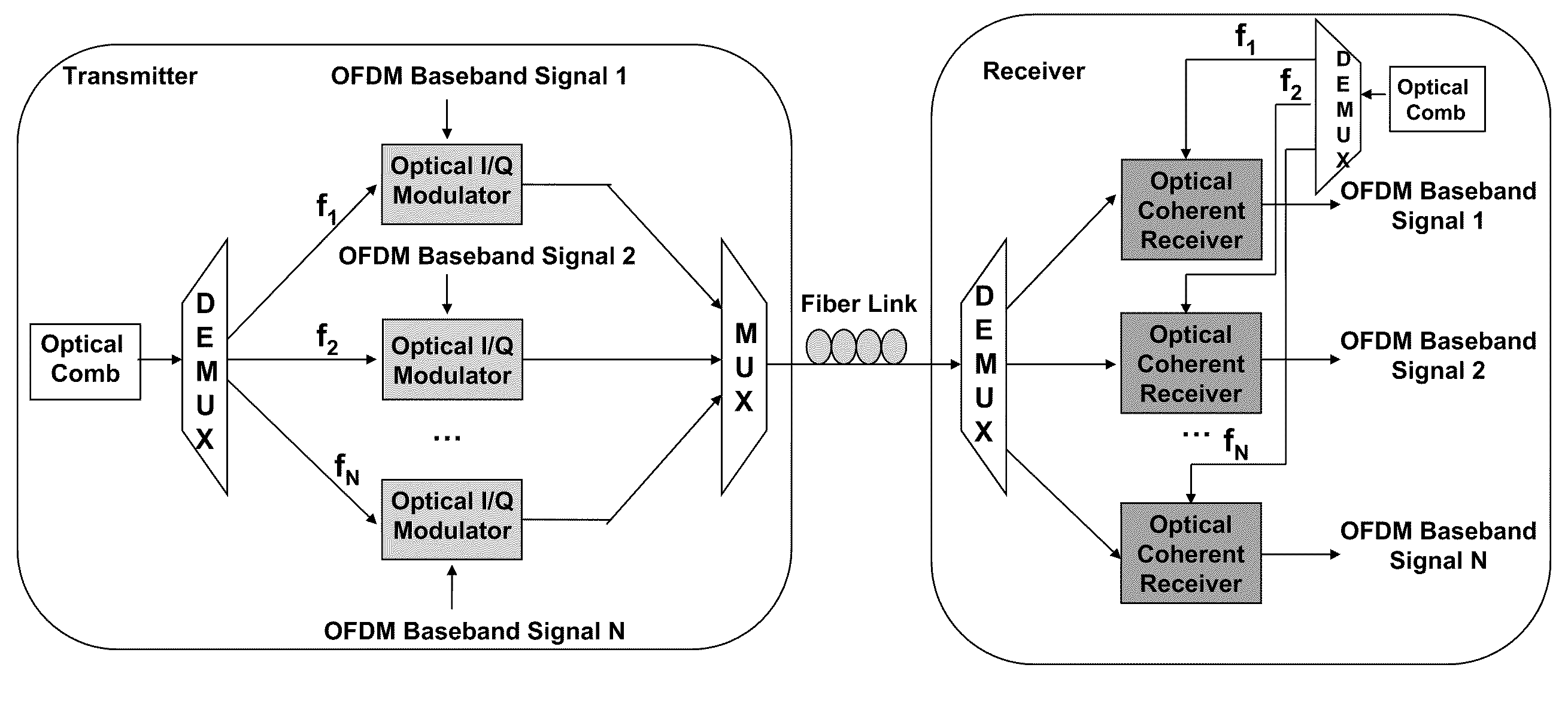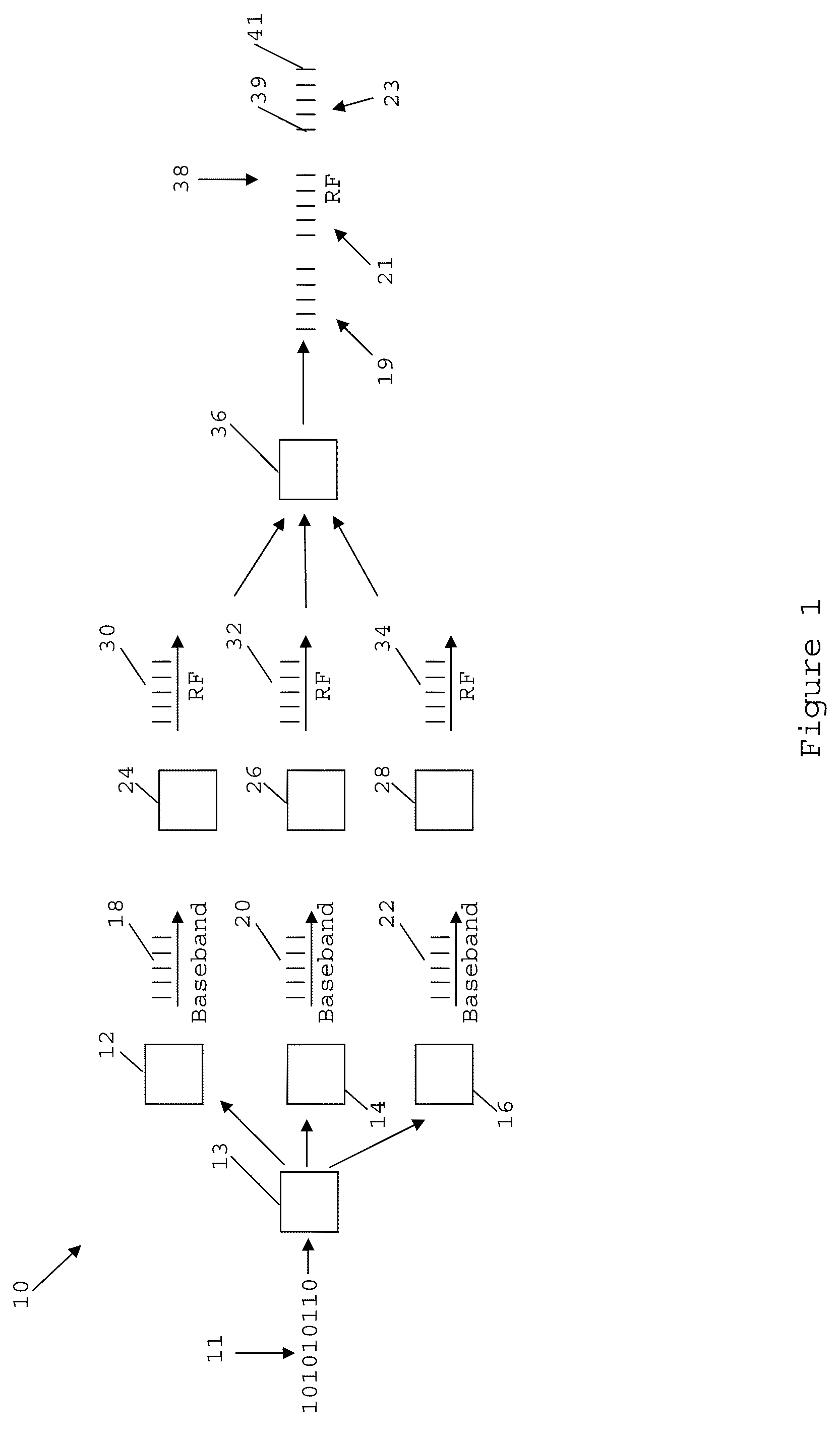Signal method and apparatus
a technology of orthogonal frequency division and signal, applied in the field of signal methods and apparatuses, can solve the problems of meliorating technical and economic problems, and achieve the effect of reducing the number of optical channel generators used
- Summary
- Abstract
- Description
- Claims
- Application Information
AI Technical Summary
Benefits of technology
Problems solved by technology
Method used
Image
Examples
Embodiment Construction
[0107]In one embodiment a signal comprising a plurality of mutually orthogonal subcarriers constituting a plurality of bands is generated, transmitted, and then processed at a receiver. Each band is generated separately using relatively slow electronics and then the bands are combined to form a fast signal. As a result, the electronics and especially DAC / ADCs in the apparatus do not need to operate at an extremely high sampling rate. The DAC / ADCs only require a bandwidth approximately equal to each OFDM band, which is approximately the signals original bandwidth divided by the number bands. When the signal is an OFDM signal, dividing the OFDM spectrum into multiple orthogonal bands is called by the applicant ‘orthogonal-band-multiplexed OFDM’ (OBM-OFDM). The OFDM bands can be multiplexed and de-multiplexed without inter-band interference because they are orthogonal.
[0108]The subcarriers are mutually orthogonal provided, for example, that they are spaced apart in frequency by an inte...
PUM
 Login to View More
Login to View More Abstract
Description
Claims
Application Information
 Login to View More
Login to View More - R&D
- Intellectual Property
- Life Sciences
- Materials
- Tech Scout
- Unparalleled Data Quality
- Higher Quality Content
- 60% Fewer Hallucinations
Browse by: Latest US Patents, China's latest patents, Technical Efficacy Thesaurus, Application Domain, Technology Topic, Popular Technical Reports.
© 2025 PatSnap. All rights reserved.Legal|Privacy policy|Modern Slavery Act Transparency Statement|Sitemap|About US| Contact US: help@patsnap.com



